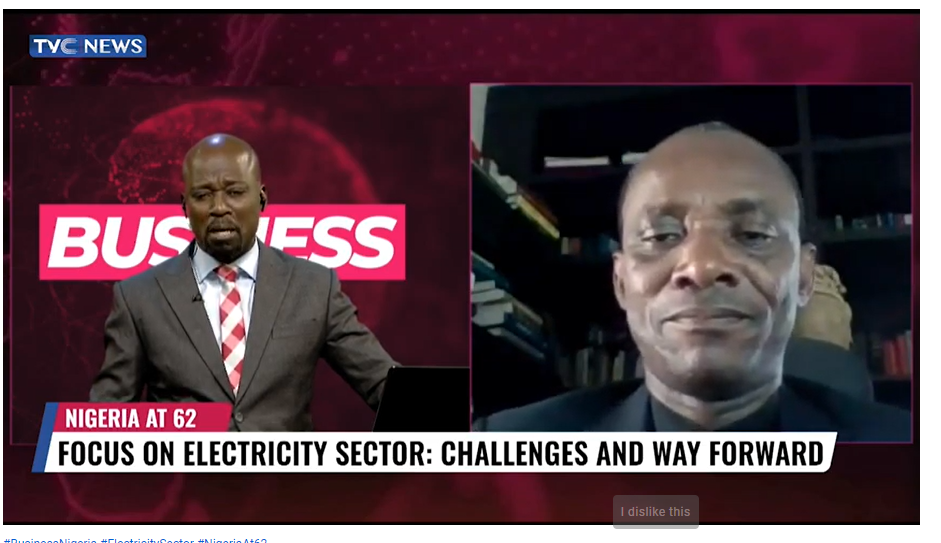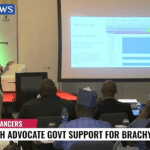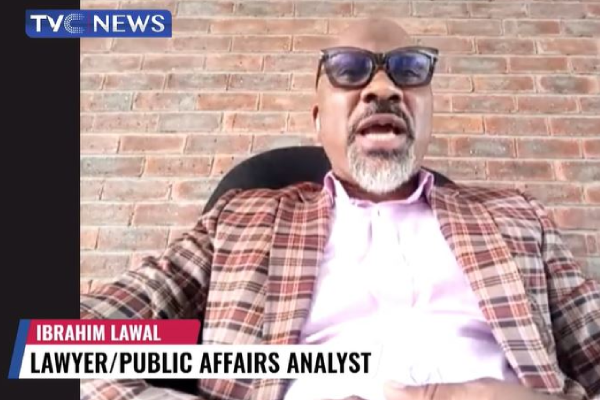The Federal Government has been urged to be a bit more creative to ensure that recurring issues in the power sector are addressed.
Former Chairman of the Nigerian Electricity Regulatory Commission, Dr Sam Amadi, gave this charge while featuring on the flagship Business Programme on TVC News Business Nigeria with Tolulope Ogunjobi.
Dr Sam Amadi said the model used in creating the power sector from the onset was wrong and needs to be completely revamped for the sector to grow.
He also called for the development of capacity within the sector especially for the operators of the distribution companies.
He said failure to invest appropriately from the onset is responsible for the challenges the nation currently face in the power sector even after 62 years of nationhood.
Read Excerpts of his interview below…
One, insufficient capacity growth. Government is not aware the last major power plant we had for the solar form was around 87 and then we never had a new one until when I started dealing with IPPs under passenger and IPP projects. We had to start building the temporal plans which are today not all fully on board, so miss opportunities to expand capacity. Second point here is we had a public Monopoly that didn’t do well and now we are into private start building the temporal plans which are today not all fully on board, so miss opportunities to expand capacity. Second point here is we had a public Moropoli that didn’t do well and now we are into private in comparative terms. Consider how much government has put into this process. One could agree right now we didn’t improve time. We build capacity when we now bundle.
We had an efficiency, now we have bundled and privatized where yet to have significant efficiency much so is that issue of the grid not having that capacity to serve the population, not planning with the population expansion? Or is it that we need to look for other sources, particularly the IPPs and all of that? Is that where we should look at at the moment and also other sources of power. I think the problem is very poor integrated planet when you’re organizing a country like that conventionally it should be having 20 00 50 00 megawatts increments capacity because right now we didn’t improve time. We build capacity when we now bundle. We had an efficiency, now we have bundled and privatized where yet to have significant efficiency much so is that issue of the grid not having that capacity to serve the population, not planning with the population expansion? Or is it that we need to look for other sources, particularly the IPPs and all of that? Is that where we should look at at the moment and also other sources of power. I think the problem is very poor integrated planet when you’re organizing a country like that conventionally it should be having 20 00 50 00 megawatts increments in capacity because people come over to class, become more modernized, they get more gadgets so they consume more power.
We didn’t do any of that. And just like our infrastructure look at the road connecting country we have big lands but we tend to have very small narrow roads and now we are spending money to expand, to do the basics we should have done at the time of don’t forget that was the time that people come over to class, become more modernized, they get more gadgets so they consume more power. We didn’t do any of that. And just like our infrastructure look at the road connecting country we have big lands but we tend to have very small narrow roads and now we are spending money to expand, to do the basics we should have done at the time of don’t forget that was the time that government failure to invest wisely and invest proportionately to expected increase in additive demand again, second is modeling.
So when we choose to even invest hardware, we invest smartly. We use the market to run the system because of its efficiency. We construct a very rent seeking state so you have energy there and helicopters government failure to invest wisely and invest proportionately to expected increase in additive demand again, second is modeling commerciality of that transaction to both failure to invest and failure to use the right kind of model. The model that tells you that you need to make profit, reinvest the profit, expand not just capacity of quantity and also improve the reliability of the network.
So today we are using a different model, mostly private sector. But again we need to deal with the leadership and governance issue around regulatory. How do we incentivize these private entities play maximally for public interests? How do we monitor them? Because essentially there’s no magical private sector if there are no rules or regulations to align them to the public interest they could be there making money profitable and not delivering on the money or even worst case becoming bankrupt enterprises. We’ve seen the Fed Bank, they are private enrollment of this world so the private FMS themselves can go bankrupt and underserve REGIC public interest. If you don’t have smart public sectors much regulators, efficient policymakers who are thinking around how do we population and of course to serve our strategic needs for competitive economy and national security.
Those are constructions that we didn’t have in the past and we need to have now to do very efficient and practical energy resource management plan so that planning end to end not just investing in new partners but also those purples are available, are routinely maintained, manage well so that they can deliver their capacity. We might make a mistake of investing more and more, expanding more and again renewable energy technologies. How do we use ship so that even as we cure our lost incapacity we are also improving the quality and the cleanness of the energy are moving into green economy so that it doesn’t down enough too late when our foresight work will be able to carry our strategic entry into a green account. So this is all about policy thinking, analytic thinking and efficient project management and delivery making real sense now before I let you go because of course time is well spent, nowhere enough to discuss the power sector what really is the role of the private sector in Nigeria’s power value chain? I want you to explain to us we thought that when they came in to privatize take over the discourse we’re going to see a shift what really should be their role because many will say government cannot fund par it’s capital intensive. Well, it’s true, private sector has a rule to provide investment and that’s because if the market works then they are able to attract private sector from the different persons who have incentive and interest in person or they are profitable.
So their bottom line is find the money, find the bunch of know how, come and deliver power for that how to do that the government has set the state right not just drive tariffs and regulations but also confidence bureau. Again, there are also some pieces of this product. The private sector transmission is a public good so nobody can fund it at this stage. So those inefficiency is government work smartly and this is important.
Government can actually provide services if they use market based policy structure. We are proprietary a risky market, hasn’t got a history of credit, hasn’t got a history of contract trading along in our past I just tried to do it so that lack of credit to do something, they’re going to look at the profitably. So some of those important work transmission network position and so on so forth but the private sector may not have the appetite to restaurant government should intervene but intervene in clear ways that provide incentive and that is not putting more risk on the sector. Government cannot just come and dump themselves in the sector that has to come with the private sector set up and socialize some costs that the private do not want to take and so when you see a smart government and deployment government doing the right things then the province will have more confidence to come in.
Sometimes a law, sometimes with government because the government has track record of intelligence, of contracting stability, of political certainty and of course policy continuity. So I think we’re getting better with two more to turn around the level if you can do this in 1 minute cost reflective tariff, we’ve talked about this before now is another argument that the investors will put up and tell you that we can sell power at a subsidized rate. Government wants us to sell at this amount, we’re generating at this amount. Where do we get a balance in all of this?
So today we are using a different model, mostly private sector. But again we need to deal with the leadership and governance issue around regulatory. How do we incentivize these private entities play maximally for public interests? How do we monitor them? Because essentially there’s no magical private sector if there are no rules or regulations to align them to the public interest they could be there making money profitable and not delivering on the money or even worst case becoming bankrupt enterprises. We’ve seen the Fed Bank, they are private enrollment of this world so the private FMS themselves can go bankrupt and underserve REGIC public interest. If you don’t have smart public sectors much regulators, efficient policymakers who are thinking around how do we population and of course to serve our strategic needs for competitive economy and national security.”














